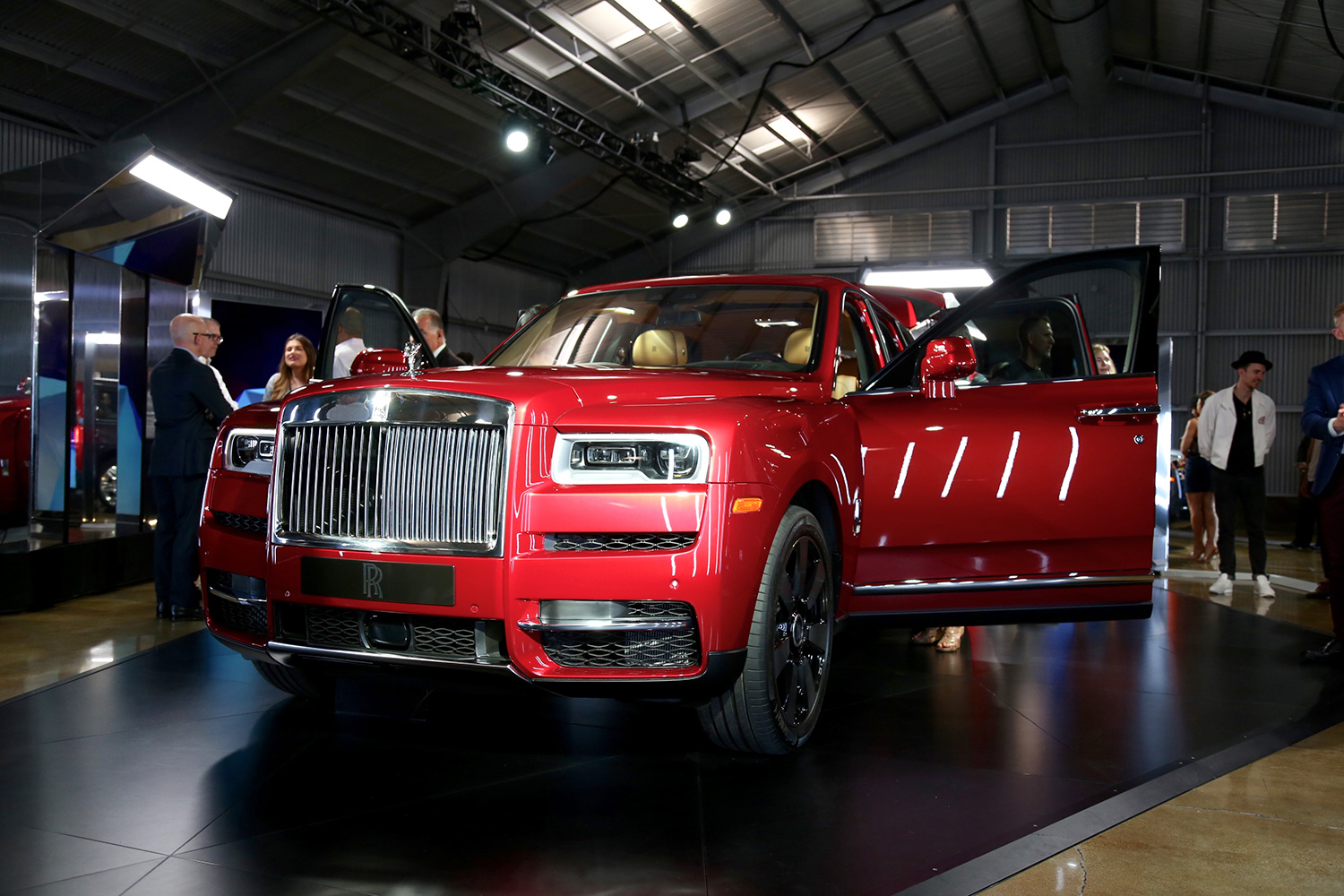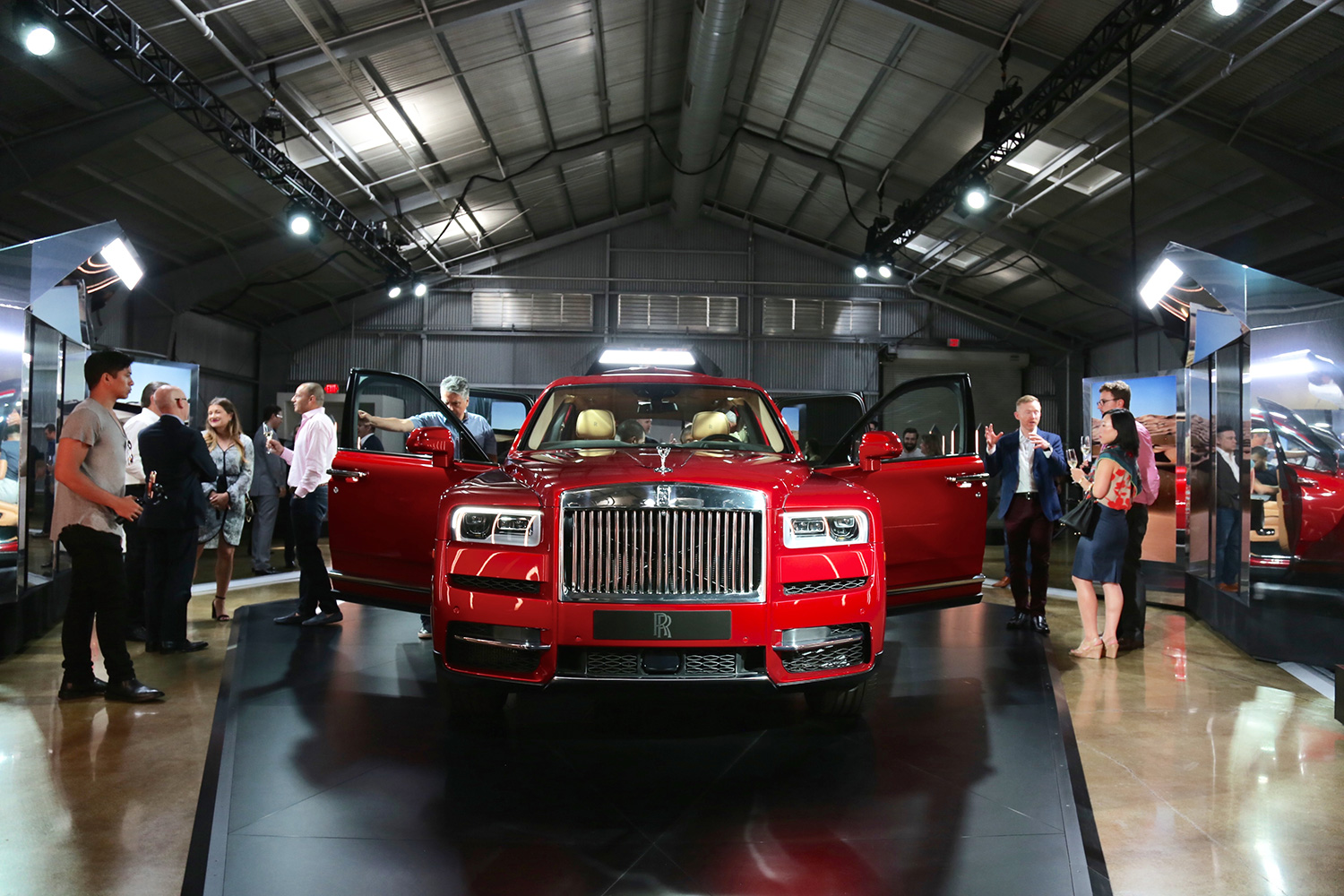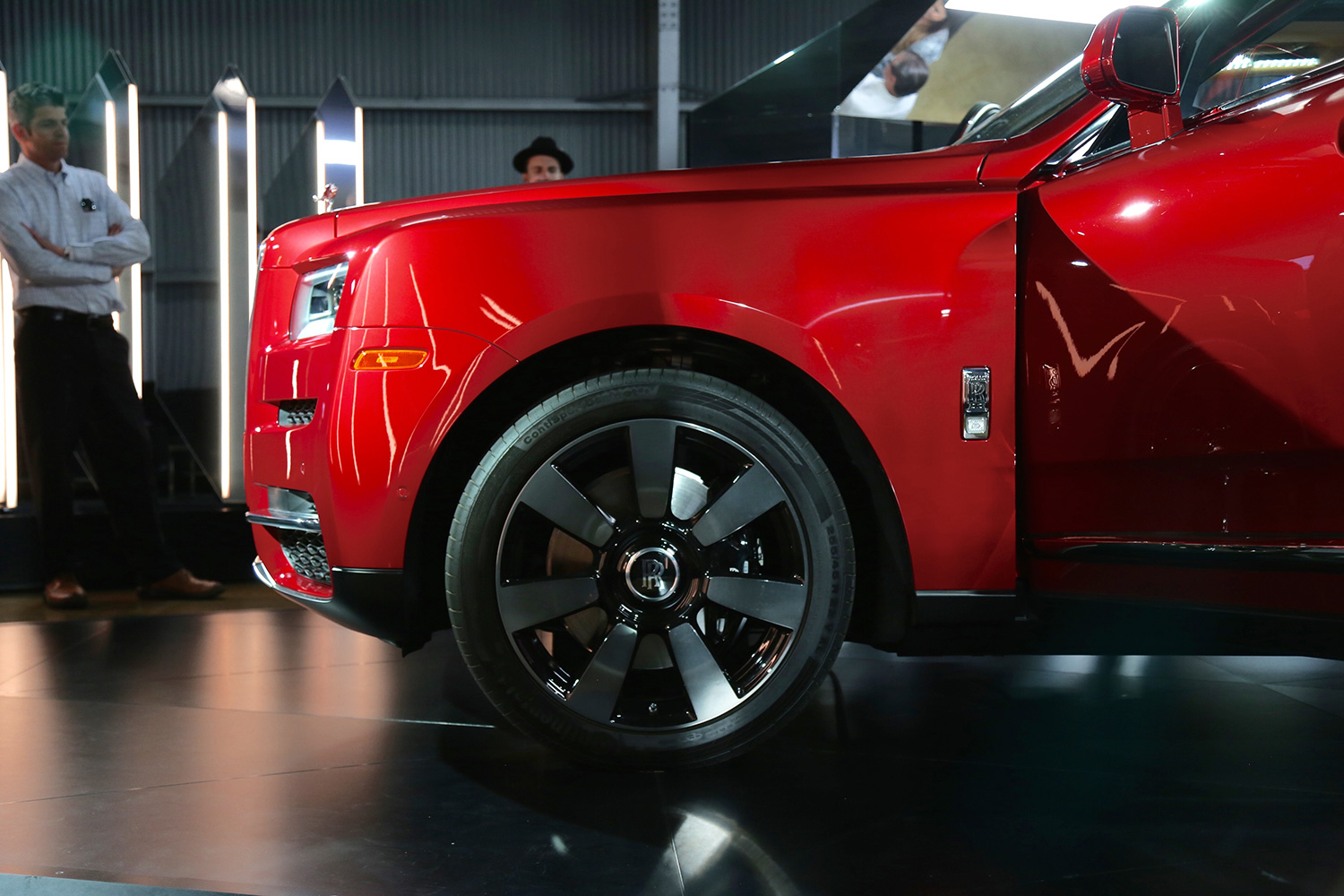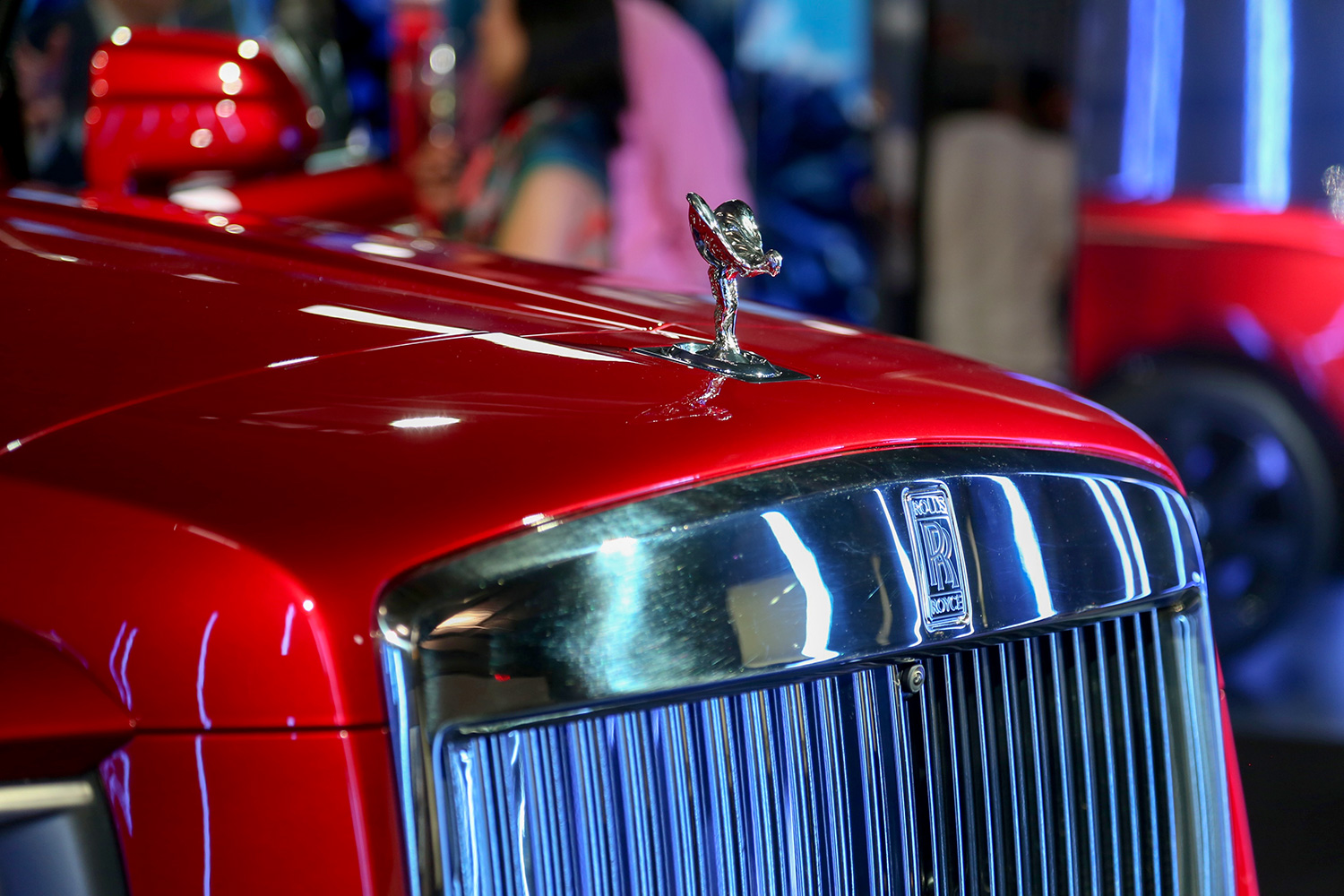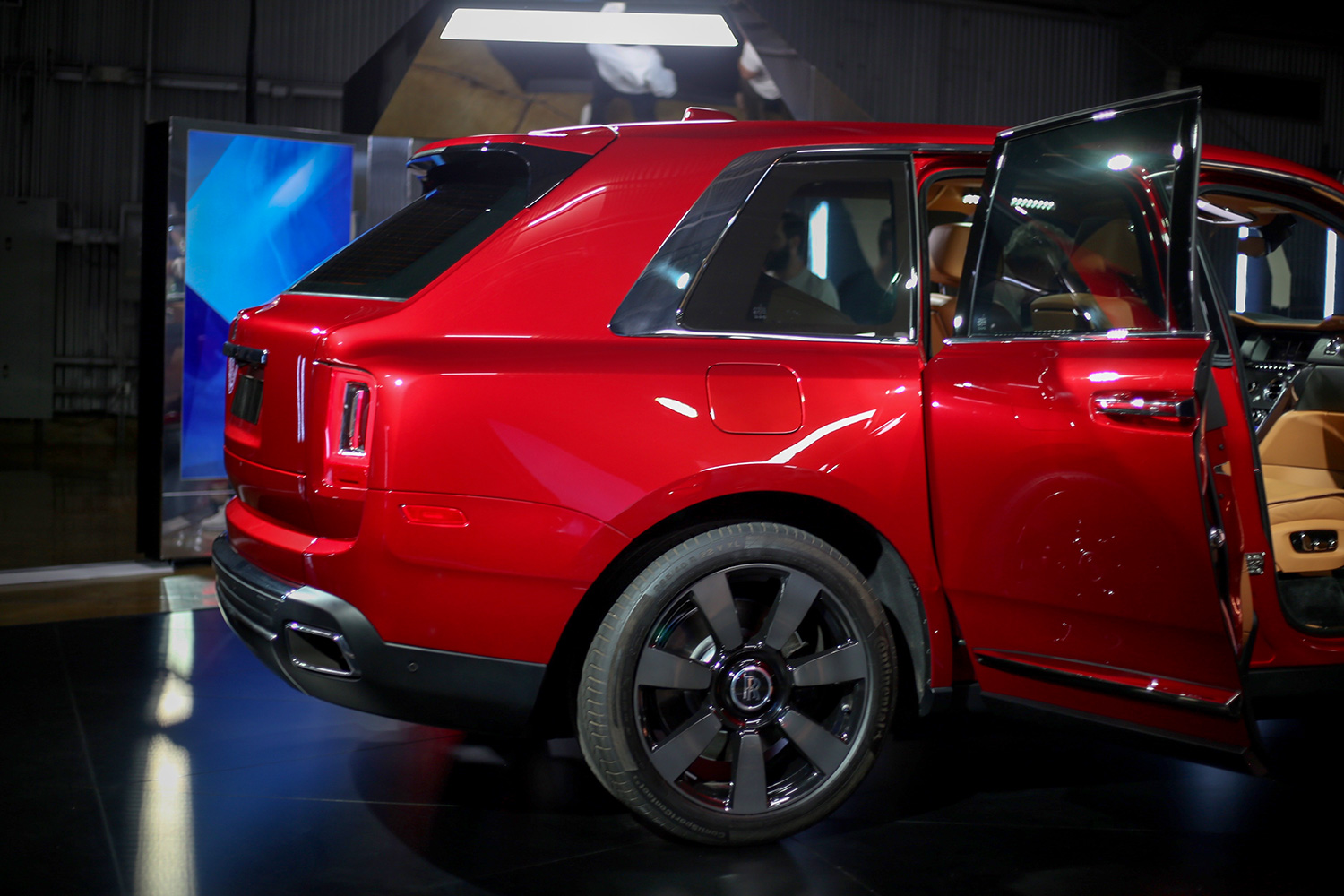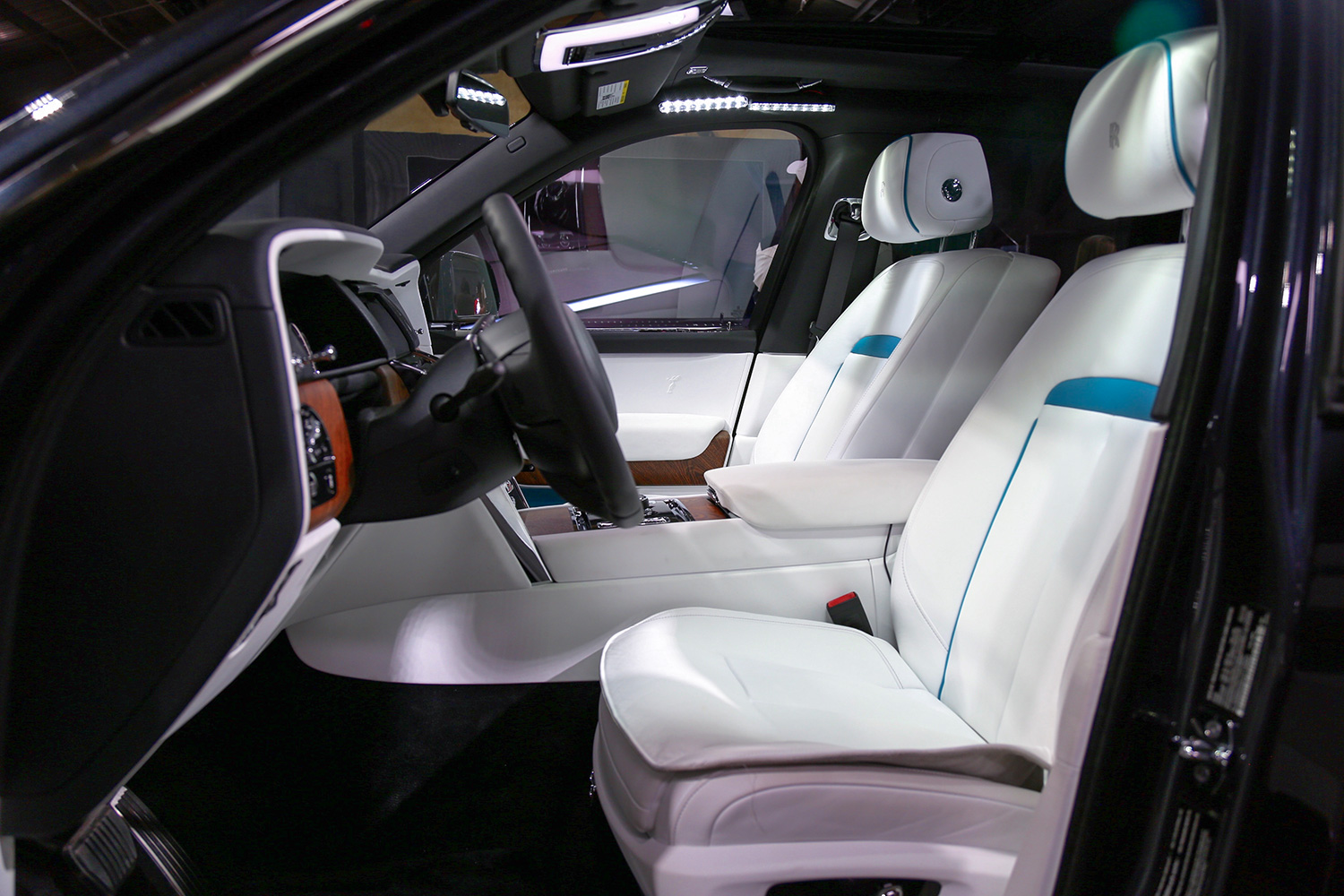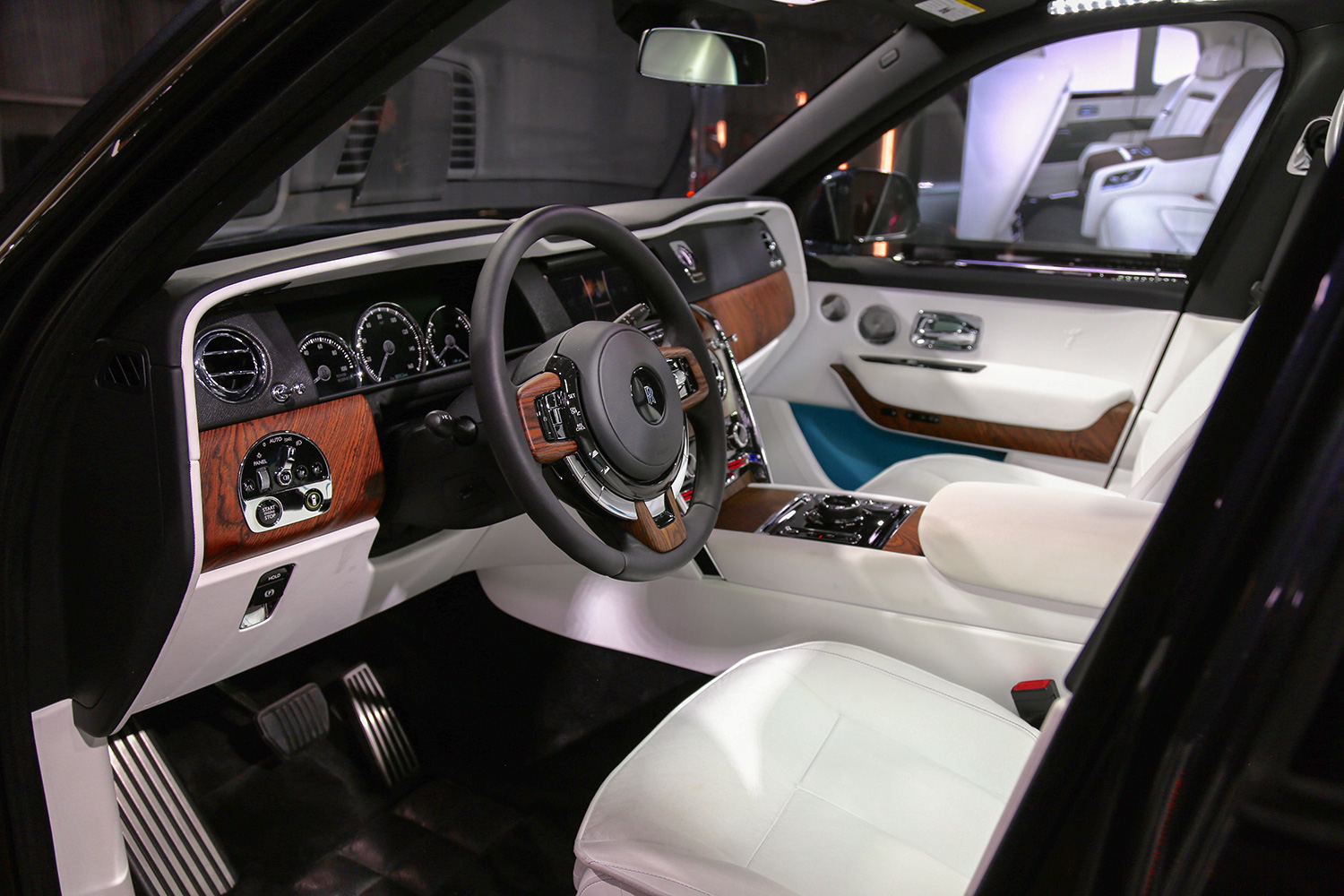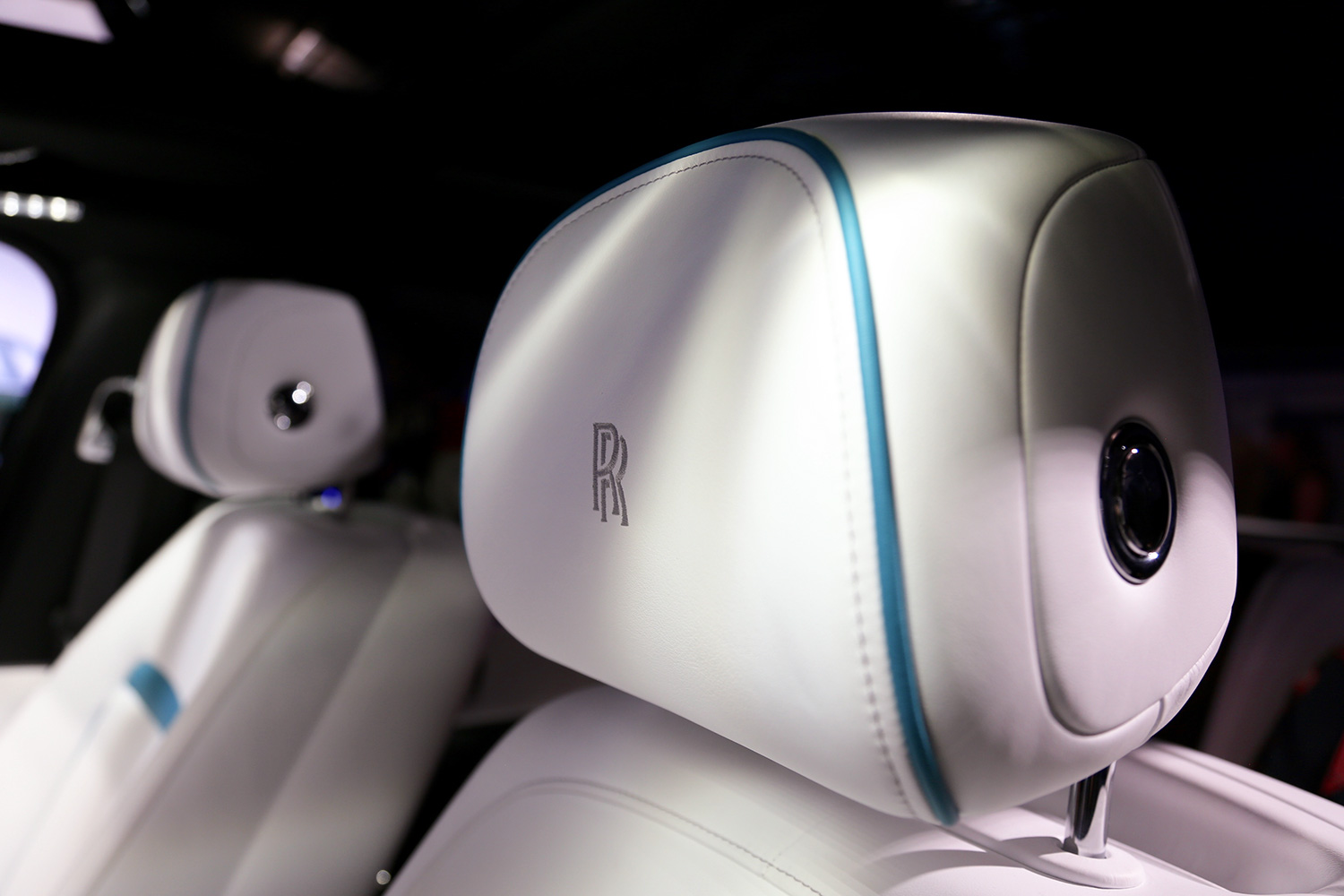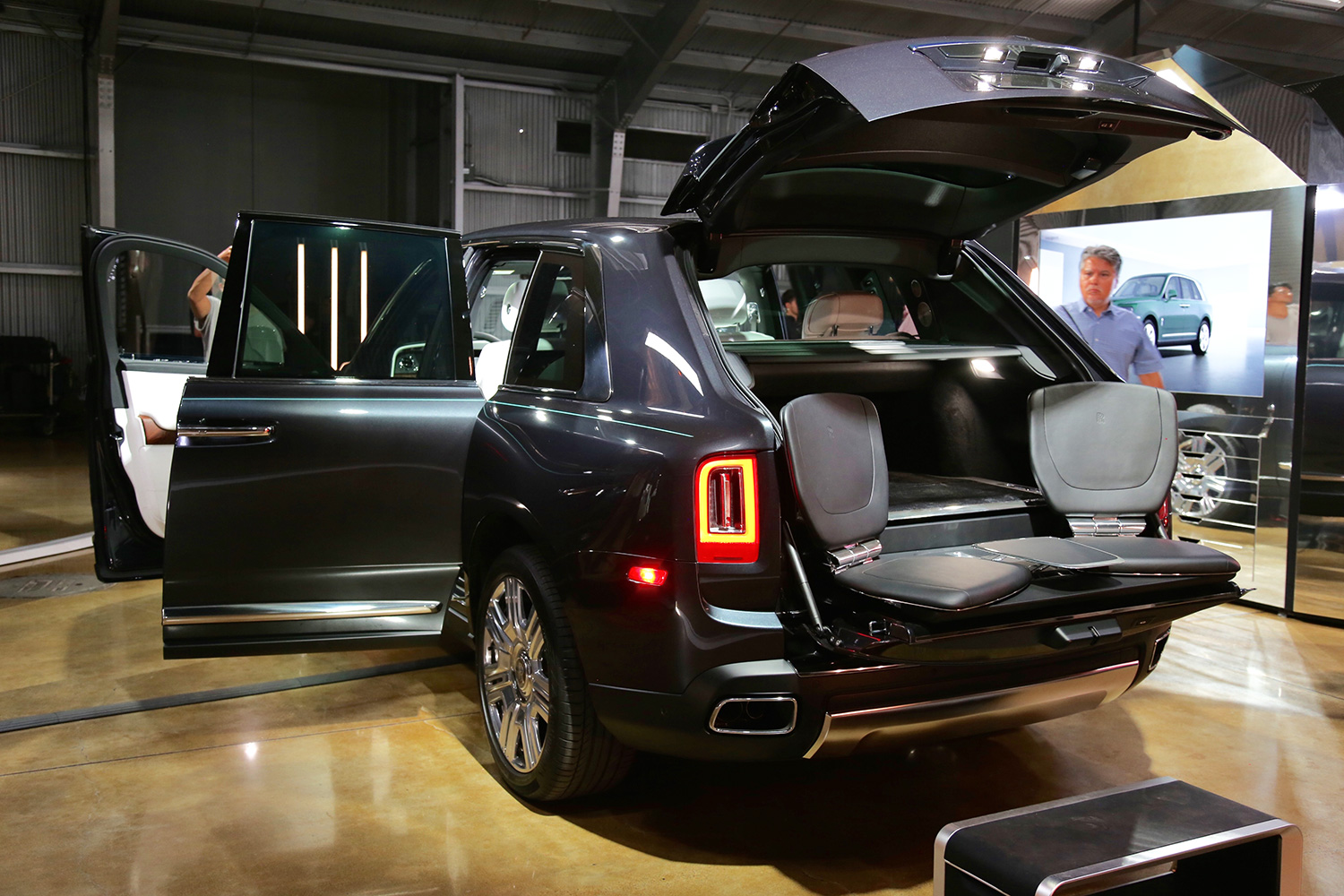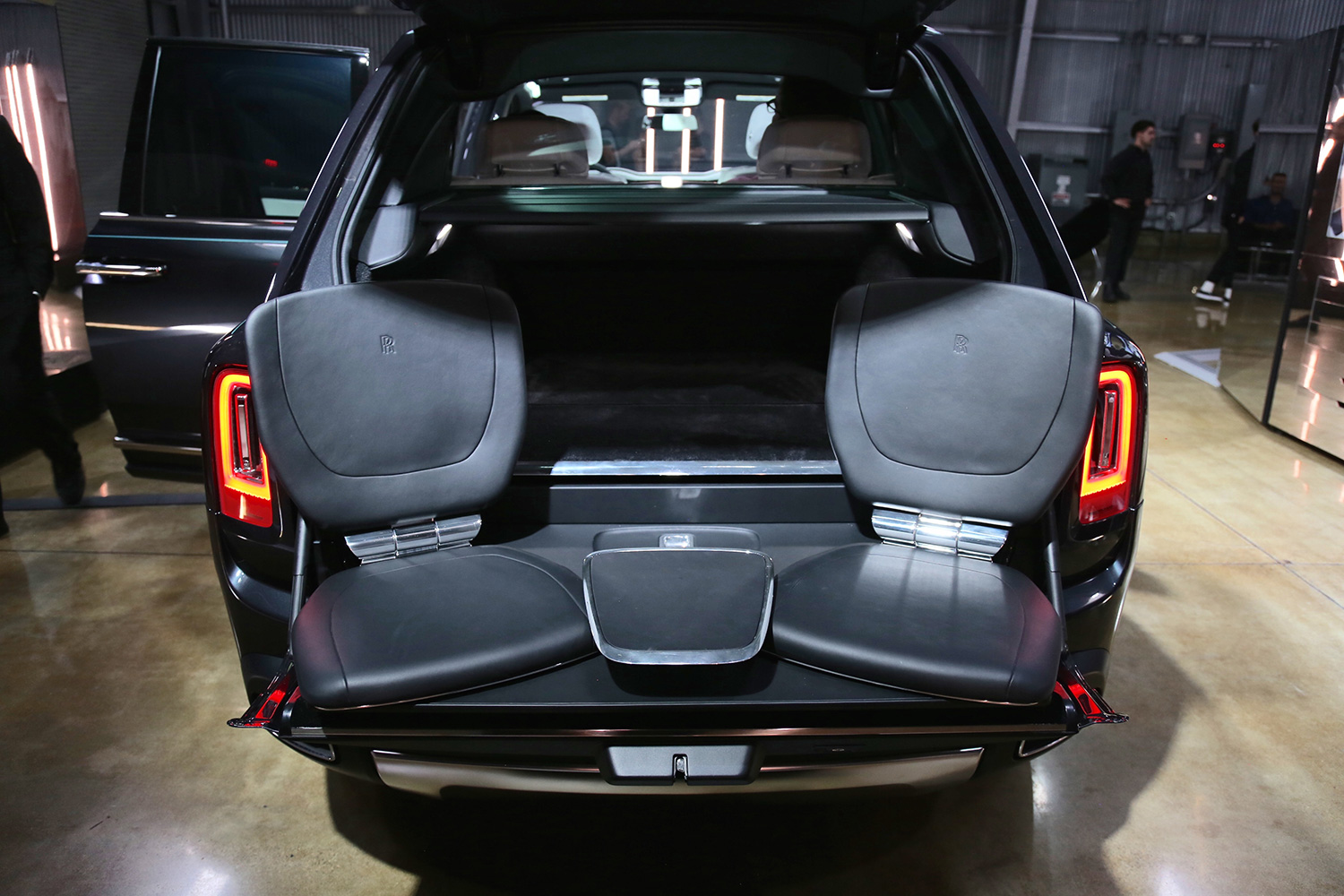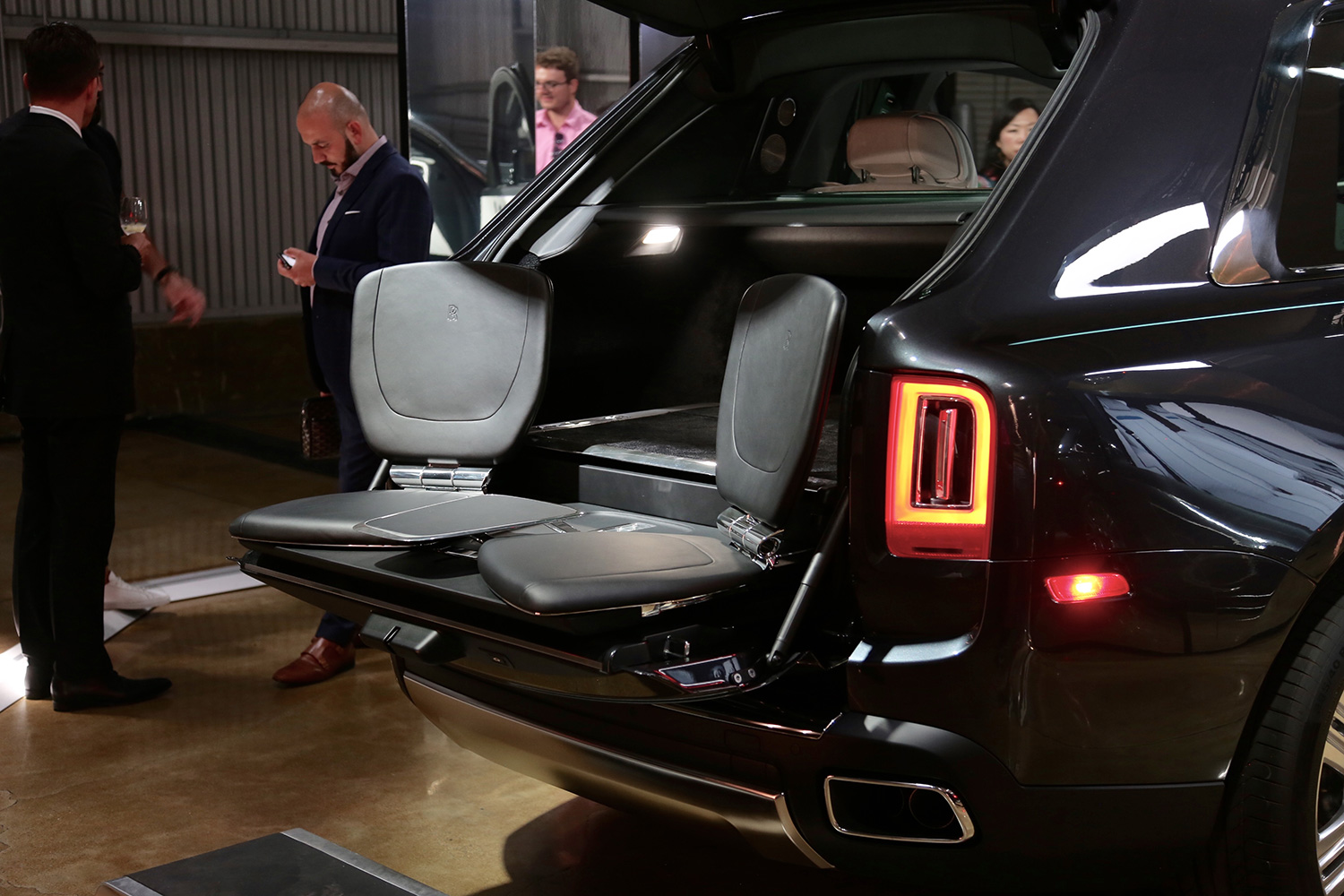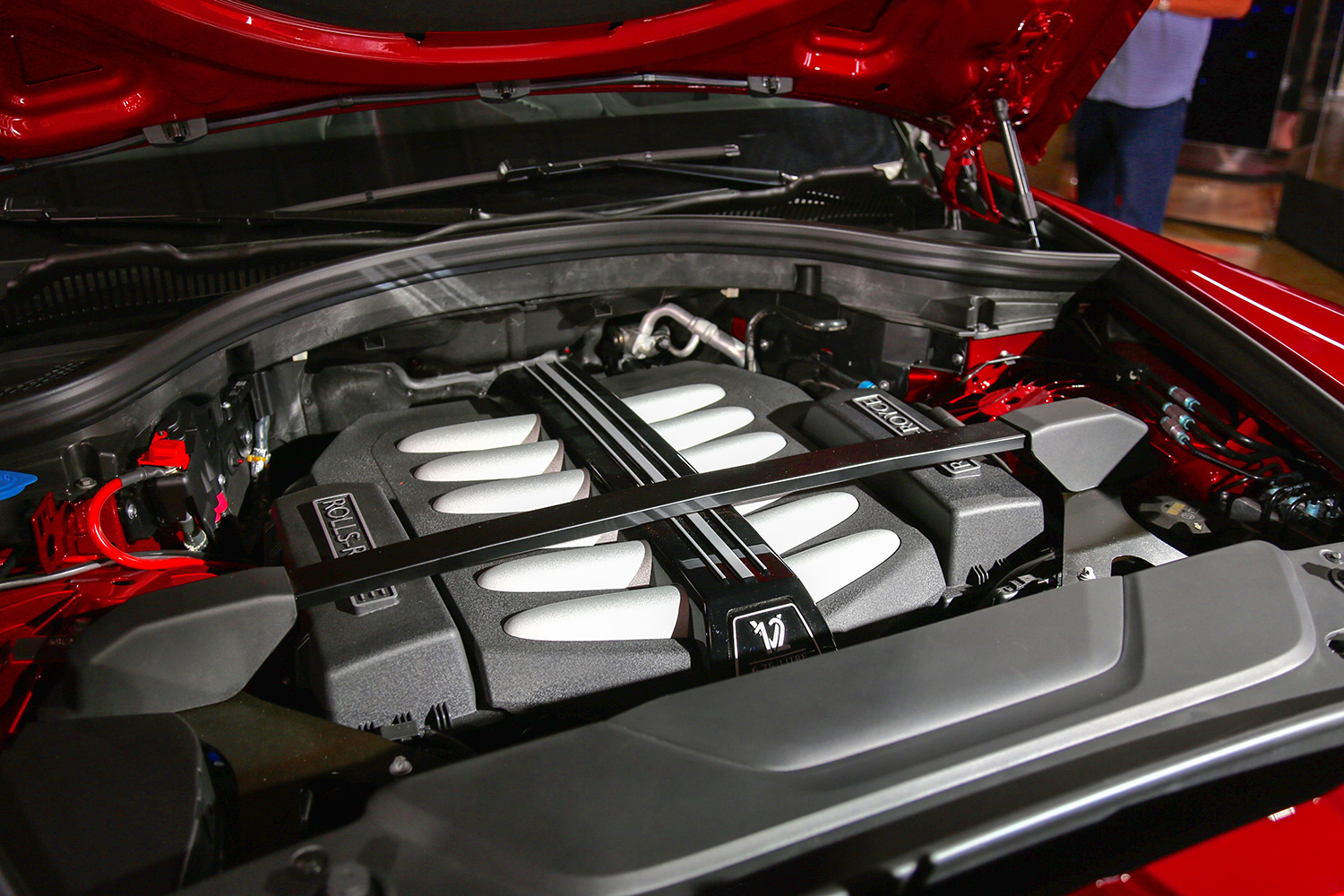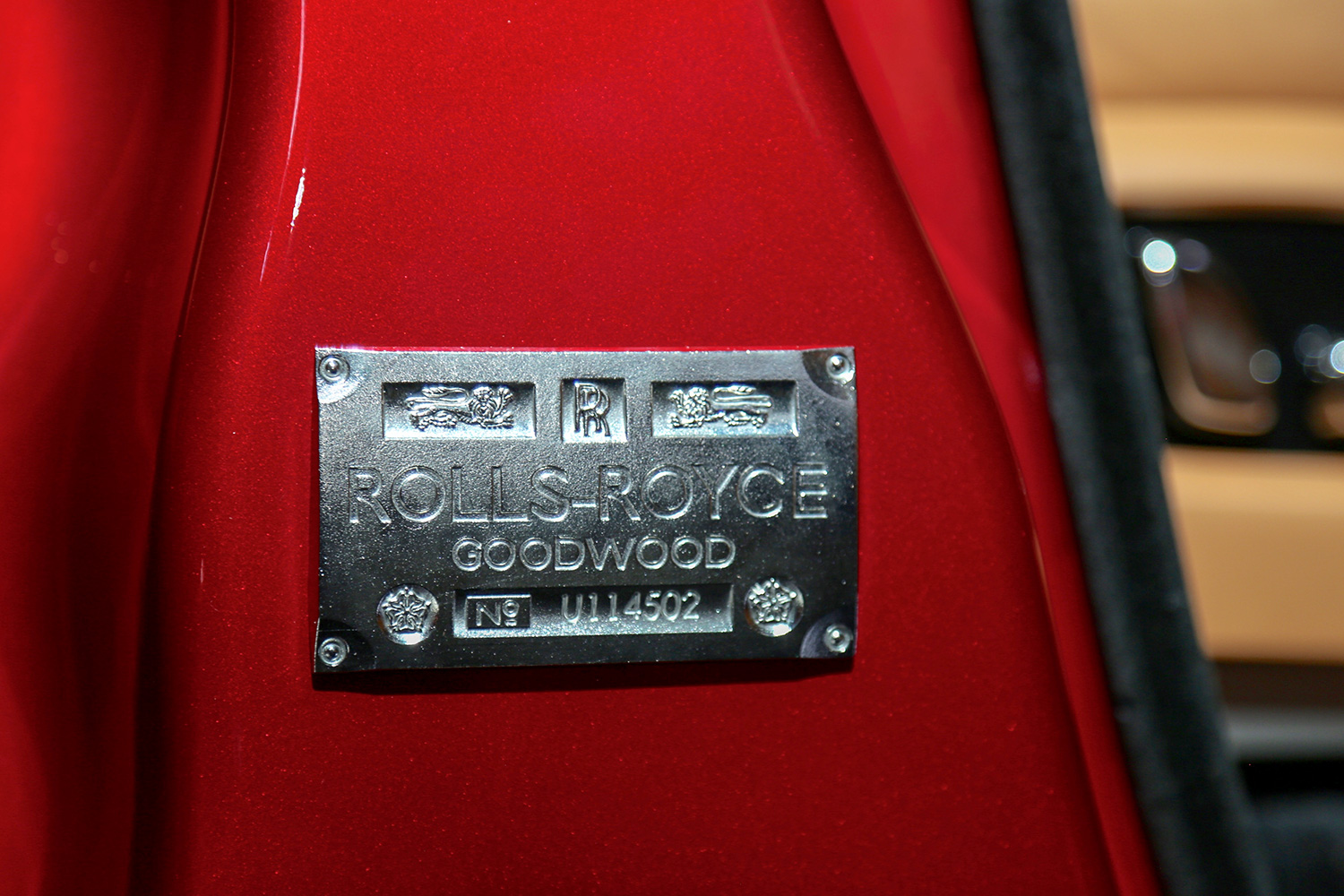For Rolls-Royce, the question was not whether to build an SUV, but how. With SUVs and trucks now outselling cars, and luxury models accounting for a large chunk of the market, the British marque knows its customers want a premium utility vehicle in their stable – so why shouldn’t it be a Rolls?
The Cullinan (named after the largest gem-quality diamond ever discovered) is a bundle of firsts for one of the most recognizable brands on earth. The first SUV to wear the Spirit of Ecstasy ornament is also the first Rolls-Royce to feature an all-wheel drive system, a clamshell hatchback, and touchscreen displays. Like the Urus for Lamborghini or the Bentayga for Bentley, the Cullinan will become the brand’s best-selling model – never approaching mainstream but boosting sales considerably. The market dictates this fact, but it doesn’t say whether the Cullinan is a true Rolls-Royce.
We’ve seen the photos and formed some initial impressions, but to come to any sort of conclusion, we need to see the high roller in person. Thankfully, such an opportunity presents itself at Milk Studios in Los Angeles, CA. Here, Rolls-Royce invites select media and customers to examine its groundbreaking vehicle in the metal.
Visual impact
The primary objective when designing the Cullinan’s exterior was for it to look distinctively Rolls-Royce. Call that mission accomplished. In person, the SUV’s size, proportions, and styling cues can’t be mistaken for anything but Rolls royalty.
Constructed on the Phantom VIII’s new Architecture of Luxury platform (not, as rumors claimed, the upcoming BMW X7’s bones), the Cullinan’s wheels are pressed to the ends of its body, creating a stately stance and making room for coach (suicide) doors. As to be expected, the Cullinan is shorter than Rolls-Royce’s sedans, but longer than any other luxury SUV. It’s also tall – about as tall as the Land Rover Range Rover — and sticks pretty close to Rolls-Royce’s traditional 2:1 ratio of body/glass height to wheel height. A thin strip of bright chrome on the door rocker serves a dual purpose of protecting the doors from damage and raising the eye line.
Parked out front of the studio is new Phantom, and we’re grateful to have a look at the flagship sedan to note some visual distinctions with the Cullinan. While Rolls-Royce lowered the Phantom’s new squared-off face, it retained the raised hood of classic models for the Cullinan to establish the Spirit of Ecstasy’s “wake.” The massive Parthenon grille and ornate LED headlights and taillights of contemporary Rolls Royce cars are massaged into the SUV’s taller body.
Until the Cullinan, a three-box SUV (with defined hood, cabin, and trunk segments) hadn’t been attempted. There’s a good reason for that: it’s exceedingly difficult to pull off. Alas, in the name of heritage, Rolls-Royce designers took up the challenge. The result of their efforts is more “homage” to a third box than an actual caboose. A split tailgate features a notch on the upper door, extending the rump for a dollop of extra utility. The intention and lineage are clear without consuming attention.
Premium touches
Like all Rolls-Royce models, the Cullinan will be driven personally by some customers and chauffeured for others. As such, the cabin must be flawless, with premium amenities for both front and rear occupants.
Open-pore wood, metal trim, and boxed grain leather separate the Cullinan from anything we’ve seen in this segment.
Open-pore wood, metal trim, and boxed grain leather in abundance separate the Cullinan’s interior from anything we’ve seen in the SUV segment. A dual command center dashboard gives both front passengers a seat of authority in case riding in a $325,000 vehicle isn’t empowering enough. According to Rolls-Royce, the vast majority of buyers (including dealerships) will customize their Cullinan’s finishes, materials, and layout, making the purchase process far more personalized and involved than a standard new vehicle. You’re unlikely to ever see two identical examples.
A large, contemporary infotainment system fits within the center stack and can be controlled via touch inputs or via the console-mounted dial. Though the system is based on BMW’s software, it doesn’t incorporate the German brand’s latest gesture controls. Behind each front seat is another large monitor that’s revealed when the power-folding tray is beckoned. The Cullinan can also be equipped with adaptive cruise control, a head-up display, night vision assist, a surround-view camera, and forward collision warning.
The Cullinan’s rear quarters can be configured either with a conventional bench for three passengers, or dual captain’s chairs with an ornate center console. Both layouts are elevated for a clear view out the front windshield and a relatively flat floor. The coach door opening and long wheelbase ease access to the rear cabin considerably, allowing us to step directly into the back without contorting to avoid a wheel arch.
For even more privilege, an Opulence Edition adds a fixed glass partition between the luggage compartment and the cabin. With the divider in place, chauffeured clients aren’t exposed to outside air and noise while the driver packs or unpacks the trunk — just like Rolls Royce’s sedans. Should occupants prefer to brave the elements, an optional Recreation Module hides a set of leather chairs in a power-operated trunk compartment. When deployed, the system includes a small tray and storage basin. Tailgating just doesn’t get posher than this.
“Adequate” performance
Those who have ever held a high-quality timepiece know that premium construction usually means heft. The volume and array of luxury details in the Cullinan carry a similar weight penalty. At approximately 6,150 pounds, the Cullinan certainly requires “adequate” power – Rolls Royce’s classic definition of vehicle output.
Even the concept of an SUV with high-end sedan docility is hard to grasp.
To put a number on it, the SUV produces 563 horsepower and 627 pound-feet of torque from a 6.7-liter twin-turbocharged V12 engine. The massive 12-cylinder shifts through an eight-speed automatic transmission and a permanent all-wheel drive system. Peak torque comes on at 1,600 rpm and doesn’t fizzle until redline. From a standstill, the Cullinan should reach 60 mph in just over five seconds before continuing on to an electronically limited top speed of 155 mph.
Rolls-Royce’s first attempt at an all-wheel drive system is simple yet effective. By default, 90 percent of available torque is delivered to the rear wheels, but up to 100 percent can be routed to the front or rear axle when needed. If and when owners decide to explore the unpaved world, a single “off-road” button chooses where and when to apply power for maximum traction. On-road, the Cullinan’s rear wheel steering system either reduces the turning circle or adds stability based on vehicle speed.
Power and all-terrain capability are nothing new in the SUV world, but Rolls-Royce introduces unparalleled ride quality. The British luxury brand endows its full-size SUV with the same “magic carpet ride” (air suspension) as its other models, optimized for the Cullinan’s size, height, and weight. Even the concept of an SUV with high-end sedan docility is hard to grasp, so we’ll have to wait for our test drive to apply more words to the experience.
